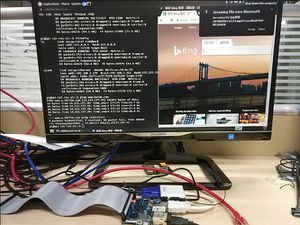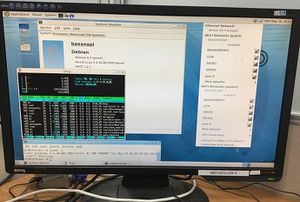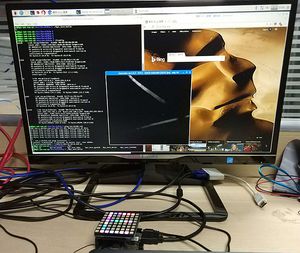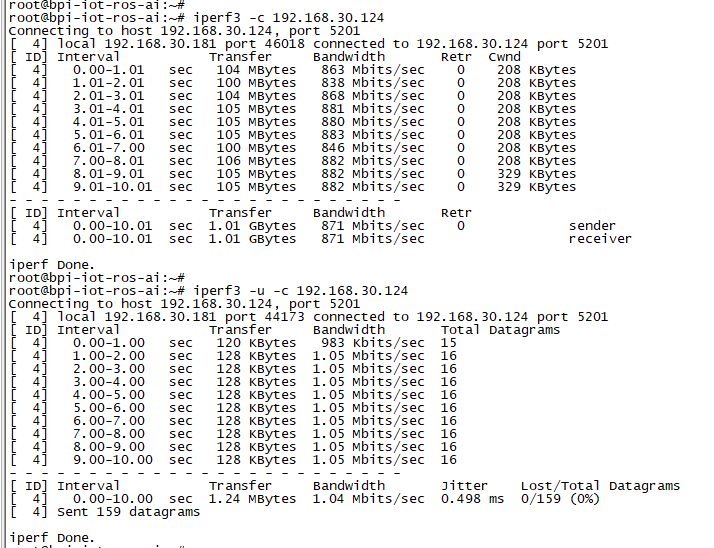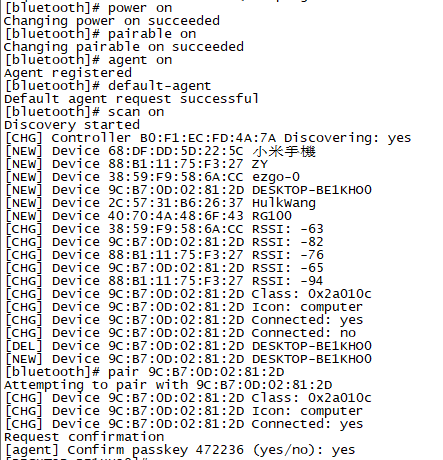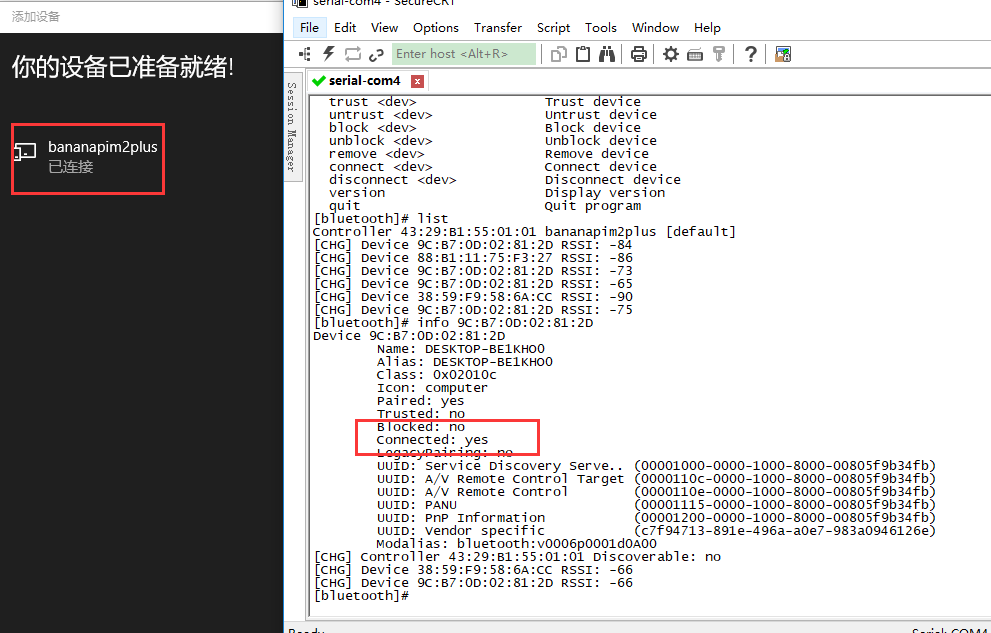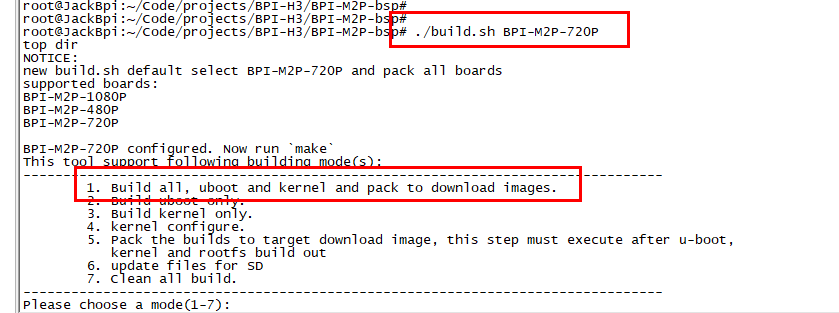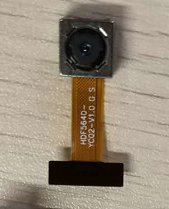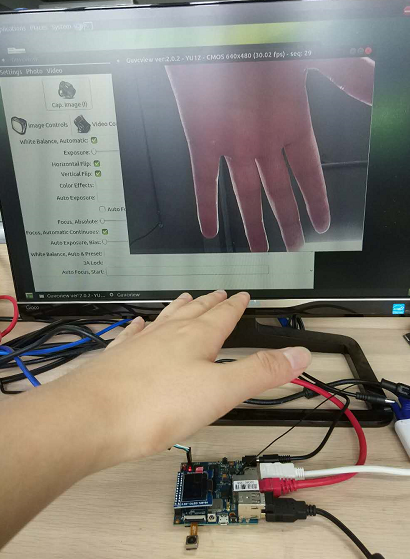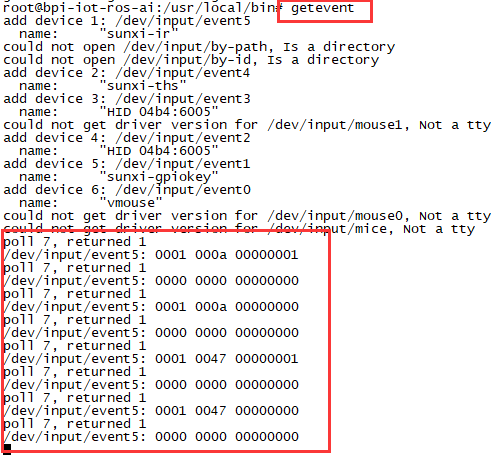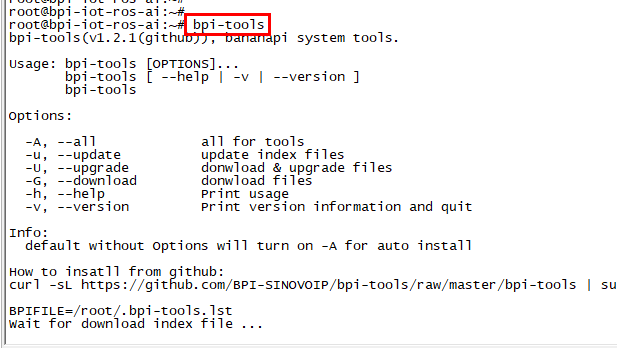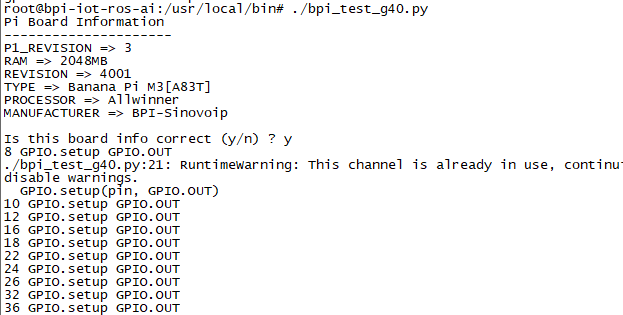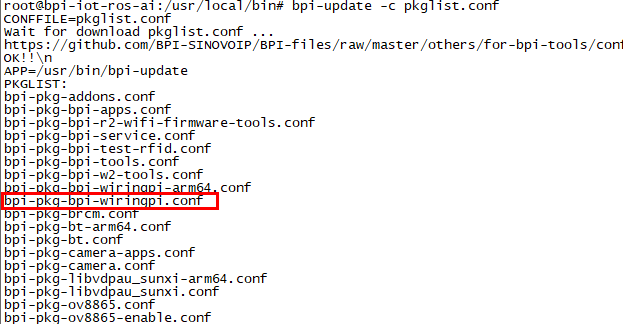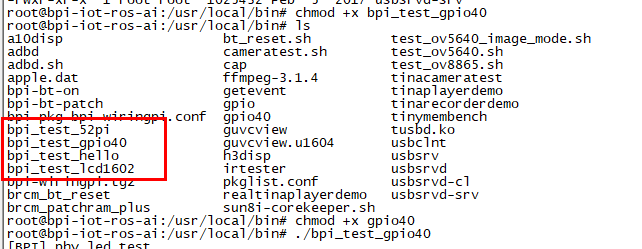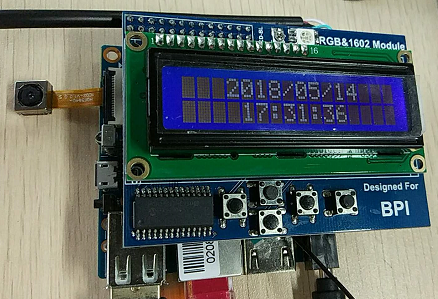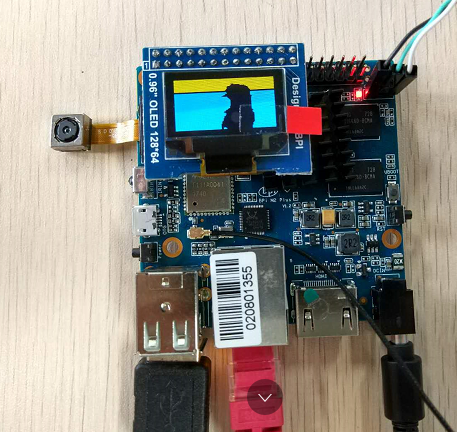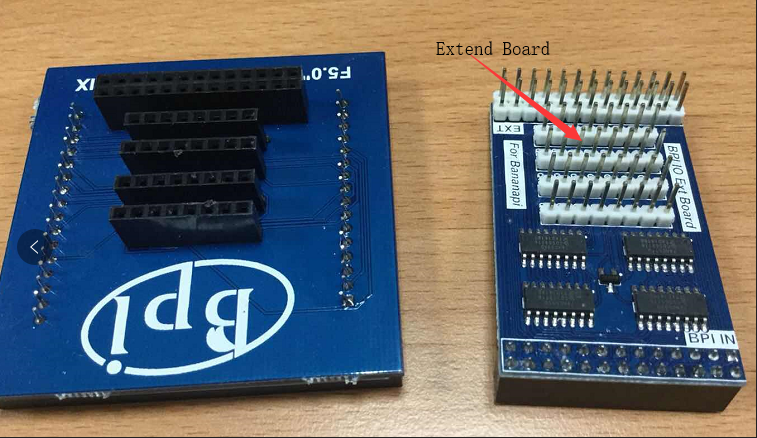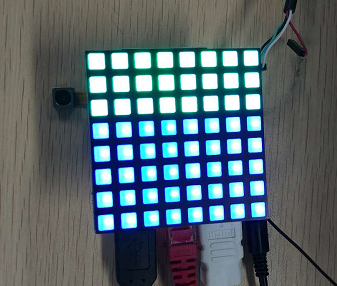Difference between revisions of "Getting Started with M2P"
JackZengWiki (talk | contribs) (→Basic Development) |
(→Development For Android) |
||
| (66 intermediate revisions by 5 users not shown) | |||
| Line 1: | Line 1: | ||
| + | [[zh:快速上手 香蕉派 BPI-M2+]] | ||
=Introduction= | =Introduction= | ||
| + | [[File:Banana_pi_BPI-M2+_2.jpg|thumb|Overview: [[Banana Pi BPI-M2+ ]]]] | ||
| + | [[File:M2p_ubunu.jpg|thumb|Overview: BPI-M2+ Ubuntu linux]] | ||
| + | [[File:M2p_debian.jpg|thumb|Overview:BPI-M2+ Debian linux]] | ||
| + | [[File:Rasbian.jpg|thumb|Overview:BPI-M2+ Rasbian linux]] | ||
| + | |||
Banana Pi M2+ is mini size development board that offers great computing performance in an ultra portable form factor.It is a 65mm*65mm fantastic mini size board with Allwinner H series chips. It comes with different versions but share the same interfaces. | Banana Pi M2+ is mini size development board that offers great computing performance in an ultra portable form factor.It is a 65mm*65mm fantastic mini size board with Allwinner H series chips. It comes with different versions but share the same interfaces. | ||
| − | Read more: [[Banana Pi BPI-M2+]] | + | *Read more about : [[Banana Pi BPI-M2+]] |
| + | *Burn image : [[Quick Start Banana pi SBC]] | ||
==BPI-M2+ H3== | ==BPI-M2+ H3== | ||
| Line 13: | Line 20: | ||
* 10/100/1000Mbps Ethernet Port | * 10/100/1000Mbps Ethernet Port | ||
| − | =Development= | + | =Development For Android= |
| − | + | ===Load your first image on M2P=== | |
| + | |||
| + | * Download PhoenixCard: https://pan.baidu.com/s/1-fjvPqtG_zewVzqnXf1AHw?pwd=eid9 | ||
| + | |||
| + | 1.You could download latest image from our forum. | ||
| + | Ex: http://forum.banana-pi.org/t/bananapi-bpi-m2p-h3-new-image-android7-0-release-2018-6-30/6147 | ||
| + | |||
| + | 2.Put your TF card into a TF-USB adapter, and then plug adapter in your Windows PC usb interface. | ||
| + | |||
| + | 3.Prepare your image, and download image burning tools PhoenixCard.exe. | ||
| + | |||
| + | 4.Use "PhoenixCard.exe" to burn android image to TF card. | ||
| + | |||
| + | * Here is the example of M3 | ||
| + | |||
| + | [[Image:M3_Android_Burning.png]] | ||
| + | |||
| + | ===Load your image on M2P EMMC=== | ||
| + | 1.The only different with sd card burning is the image burning mode item choice | ||
| + | |||
| + | * Here is the example of M3 | ||
| + | |||
| + | [[Image:M3_Android_Emmc_Burning.png]] | ||
| + | |||
| + | 2.After succeed to burn image to SD, then plug SD card in your M2P | ||
| + | |||
| + | 3.Press power button, device will copy image to EMMC automatically | ||
| + | |||
| + | * Download PhoenixCard: https://pan.baidu.com/s/1-fjvPqtG_zewVzqnXf1AHw?pwd=eid9 | ||
| + | |||
| + | =Development For Linux= | ||
==Basic Development== | ==Basic Development== | ||
===Prepare to develop=== | ===Prepare to develop=== | ||
| − | + | * Prepare 8G/above TF card, USB-Serial interface, PC with Ubuntu System | |
| − | + | * Using your USB-Serial Connect debug console on M2P | |
| − | |||
===Load your first image on M2P=== | ===Load your first image on M2P=== | ||
1.You could download latest image from our forum | 1.You could download latest image from our forum | ||
* Here is the example forum thread link: http://forum.banana-pi.org/t/banana-pi-bpi-m2p-new-image-release-ubuntu-16-04-v1-1/5719 | * Here is the example forum thread link: http://forum.banana-pi.org/t/banana-pi-bpi-m2p-new-image-release-ubuntu-16-04-v1-1/5719 | ||
| − | + | ||
| − | 2.Install bpi-tools on your Ubuntu | + | 2.Install bpi-tools on your Ubuntu. If you can't access this URL or any other problems, please go to [https://github.com/BPI-SINOVOIP/bpi-tools bpi-tools repo] and install this tools manually. |
* apt-get install pv | * apt-get install pv | ||
* curl -sL https://github.com/BPI-SINOVOIP/bpi-tools/raw/master/bpi-tools | sudo -E bash | * curl -sL https://github.com/BPI-SINOVOIP/bpi-tools/raw/master/bpi-tools | sudo -E bash | ||
| − | |||
3.After you download the image, insert your TF card into your Ubuntu | 3.After you download the image, insert your TF card into your Ubuntu | ||
* Execute "bpi-copy xxx.img /dev/sdx" to install image on your TF card. | * Execute "bpi-copy xxx.img /dev/sdx" to install image on your TF card. | ||
| + | |||
| + | 4.After step 3, then you can insert your TF card into M2P, and press power button setup M2P. | ||
| + | |||
| + | 5.Login user/password: pi/bananapi or root/bananapi. | ||
| + | |||
| + | ===Load your first image on M2P EMMC=== | ||
| + | * Run your M2P with TF card | ||
| + | * Copy "xxx-sd-emmc-xxx.img.zip / xxx-sd-emmc-xxx.img" to your USB disk | ||
| + | * Plug your USB disk in M2P | ||
| + | * After M2P recognise USB disk, execute "bpi-copy xxx-sd-emmc-xxx.img.zip / xxx-sd-emmc-xxx.img" to install image on EMMC | ||
| + | * Then power off M2P, take TF card out, power on M2P with EMMC | ||
| + | |||
| + | ===Update your image=== | ||
| + | For example, update your image to support new emmc5.1 | ||
| − | + | * execute “bpi-tools”, to update your bpi tools; | |
| + | * execute “bpi-update -c bpi-m2p.conf”, to download new driver to update your image | ||
| + | * execute “file *.tgz”, to check download files’ type is compressed data | ||
| + | * execute “bpi-bootsel”, you will see the bootloader path, “/usr/lib/u-boot/bananapi/bpi-m2p/BPI_M2P_720P.img.gz” | ||
| + | * execute “bpi-bootsel /usr/lib/u-boot/bananapi/bpi-m2p/BPI_M2P_720P.img.gz”, to update your bootloader | ||
| + | * reboot | ||
==Advanced Development== | ==Advanced Development== | ||
| + | |||
| + | ===How to build uboot & kernel=== | ||
| + | ====Install tools==== | ||
| + | * apt-get udpate | ||
| + | * apt-get install gcc-arm-linux-gnueabihf u-boot-tools | ||
| + | * apt-get install pv | ||
| + | * curl -sL https://github.com/BPI-SINOVOIP/bpi-tools/raw/master/bpi-tools | sudo -E bash | ||
| + | ====Clone code==== | ||
| + | * git clone: https://github.com/BPI-SINOVOIP/BPI-M2P-bsp.git | ||
| + | * ./build.sh | ||
| + | |||
| + | ===How to create an image === | ||
| + | * Prepare a SD card which have installed system(Ubuntu/Raspbian/..) | ||
| + | * Boot your SD card with M2P, after M2P finish starting, copy your files and config your system, then poweroff M2P. [If you don't want to config your system, you can skip this step] | ||
| + | * Plug your SD card in PC(which is running Linux), "cd /media", then "ln -s <your account> pi" | ||
| + | * Execute "bpi-migrate -c bpi-m2p.conf -c ubuntu-mate-from-sd.conf -d /dev/sdx" | ||
| + | * Then you could get your own image now | ||
| + | |||
| + | ===GPIO Control=== | ||
| + | * To access a GPIO pin you first need to export it with | ||
| + | echo XX > /sys/class/gpio/export | ||
| + | * with XX being the number of the desired pin. To obtain the correct number you have to calculate it from the pin name (like PH18) | ||
| + | (position of letter in alphabet - 1) * 32 + pin number | ||
| + | for PH18 this would be ( 8 - 1) * 32 + 18 = 224 + 18 = 242 (since 'h' is the 8th letter) | ||
| + | * echo "out/in" > /sys/class/gpio/gpio*NUMBER*/direction | ||
| + | * echo "0/1" > /sys/class/gpio/gpio*NUMBER*/value | ||
| + | |||
| + | ===OTG=== | ||
| + | 1. On M2P console: | ||
| + | * Execute "./adbd.sh", then execute "ps -ax | grep adbd" to see if adbd is set up | ||
| + | |||
| + | 2. On PC terminal: | ||
| + | * If adbd was succeed to set up, insert OTG-USB interface to M2P and PC(with Ubuntu system) | ||
| + | * Execute "adb devices" to see if PC has recognised M2P OTG | ||
| + | * If yes, we could execute "adb shell" to connect M2P by adb now | ||
| + | |||
| + | ===GMAC=== | ||
| + | * Use iperf3 to test gmac | ||
| + | |||
| + | [[Image:M2P_GMAC.png]] | ||
| + | |||
===Bluetooth=== | ===Bluetooth=== | ||
* Use bluetoothctl tool to operate BT | * Use bluetoothctl tool to operate BT | ||
| Line 46: | Line 141: | ||
===WiFi on M2P=== | ===WiFi on M2P=== | ||
| + | |||
| + | Driver code: | ||
| + | |||
| + | *https://github.com/BPI-SINOVOIP/BPI_WiFi_Firmware | ||
| + | |||
====WiFi Client==== | ====WiFi Client==== | ||
'''You have two ways to setup WiFi Client''' | '''You have two ways to setup WiFi Client''' | ||
| Line 53: | Line 153: | ||
* iw dev wlan0 scan | grep SSID | * iw dev wlan0 scan | grep SSID | ||
* vim /etc/wpasupplicant/wpa_supplicant.conf | * vim /etc/wpasupplicant/wpa_supplicant.conf | ||
| − | + | network={ | |
| − | * wpa_supplicant - | + | ssid="ssid" |
| + | psk="password" | ||
| + | priority=1 | ||
| + | } | ||
| + | * wpa_supplicant -iwlan0 -c /etc/wpa_supplicant/wpa_supplicant.conf | ||
* dhclient wlan0 | * dhclient wlan0 | ||
2. Use UI interface to setup WiFi Client | 2. Use UI interface to setup WiFi Client | ||
| + | |||
| + | ===Change Logo=== | ||
| + | 1.Download M2P bsp code | ||
| + | |||
| + | * Execute command “git clone https://github.com/BPI-SINOVOIP/BPI-M2P-bsp” | ||
| + | |||
| + | * After you cloned project, execute command “cd BPI-M2P-bsp” | ||
| + | |||
| + | 2.Change to your boot logo | ||
| + | |||
| + | * Prepare a ".bmp" picture, here I rotate 180°, as follows : | ||
| + | |||
| + | [[Image:M2P_CL_1.png]] | ||
| + | |||
| + | * Change your picture name as "bootlogo.bmp" | ||
| + | * put your picture to "sunxi-pack/chips/sun8iw7p1/configs/BPI-M2P-xxxP/" | ||
| + | Here I replaced “bootlogo.bmp” which is under | ||
| + | “sunxi-pack/chips/sun8iw7p1/configs/BPI-M2P-720P/” as an example: | ||
| + | |||
| + | [[Image:M2P_CL_2.png]] | ||
| + | |||
| + | 3.Build your code | ||
| + | |||
| + | * "./build.sh BPI-M2P-720P" | ||
| + | * choose 1 | ||
| + | |||
| + | [[Image:M2P_CL_3.png]] | ||
| + | |||
| + | * After you built the project, you will see “SD” directory | ||
| + | |||
| + | [[Image:M2P_CL_4.png]] | ||
| + | |||
| + | 4.Install a raspbian image on your SD card | ||
| + | |||
| + | 5.Plug your SD card into your Ubuntu PC | ||
| + | |||
| + | (1) check your SD card was recognised as /dev/sdxx, as you can see, mine sd card was recognised as /dev/sde | ||
| + | |||
| + | [[Image:M2P_CL_5.png]] | ||
| + | |||
| + | 6.Then “cd SD/bpi-m2p/100MB” | ||
| + | |||
| + | 7.Execute command “bpi-bootsel BPI-M2P-720P.img.gz /dev/sde” | ||
| + | |||
| + | [[Image:M2P_CL_6.png]] | ||
| + | |||
| + | 8.Insert your updated SD card to board, and power on, you will see: | ||
===Clear boot=== | ===Clear boot=== | ||
| Line 71: | Line 222: | ||
* Applications -> Sound & Video -> guvcview | * Applications -> Sound & Video -> guvcview | ||
[[Image:guvcview_ov5640.png]] | [[Image:guvcview_ov5640.png]] | ||
| − | + | ====Shell==== | |
* We also have built-in command in /usr/local/bin to test camara | * We also have built-in command in /usr/local/bin to test camara | ||
| − | * test_ov5640_image_mode.sh | + | * "./test_ov5640_image_mode.sh" to test picture taking function |
| − | * cameratest.sh | + | * "./cameratest.sh" to test video recording function |
===IR function=== | ===IR function=== | ||
| − | * Execute getevent | + | * Execute "getevent" |
* Use your IR device to send information to M2P | * Use your IR device to send information to M2P | ||
[[Image:IR_getevent.png]] | [[Image:IR_getevent.png]] | ||
| − | === | + | ===BPI-Tools=== |
| + | ====Install Bpi-tools==== | ||
| + | * Execute "curl -sL https://github.com/BPI-SINOVOIP/bpi-tools/raw/master/bpi-tools | sudo -E bash - " | ||
| + | |||
| + | ====Update Bpi-tools==== | ||
| + | * Execute "bpi-tools" | ||
| + | [[Image: Bpi-tools.png]] | ||
| + | |||
| + | ===RPi.GPIO=== | ||
| + | ====Install RPi.GPIO==== | ||
| + | * Execute "git clone https://github.com/BPI-SINOVOIP/RPi.GPIO" | ||
| + | * after clone the repo, cd RPi.GPIO | ||
| + | * Execute "sudo apt-get update" | ||
| + | * Execute "sudo apt-get install python-dev python3-dev" | ||
| + | * Execute "sudo python setup.py install" or "sudo python3 setup.py install" to install the module | ||
| + | |||
| + | ====Using RPi.GPIO==== | ||
| + | * cd /usr/local/bin | ||
| + | * Execute "./bpi_test_g40.py" to test RPi.GPIO | ||
| + | |||
| + | [[Image: RPi_GPIO.png]] | ||
| + | |||
| + | ===WiringPi=== | ||
* GitHub: https://github.com/BPI-SINOVOIP/BPI-WiringPi2.git | * GitHub: https://github.com/BPI-SINOVOIP/BPI-WiringPi2.git | ||
| − | * We also have built-in test command in /usr/local/bin | + | * We also have built-in test command in "/usr/local/bin" |
| + | |||
| + | ====How to Update WiringPi==== | ||
| + | * Execute "bpi-update -c pkglist.conf" | ||
| + | [[Image: Update_Pkglist.png]] | ||
| + | |||
| + | * Execute "bpi-update -c bpi-pkg-bpi-wiringpi.conf" | ||
| + | [[Image: Update_WringPi.png]] | ||
====RGB 1602 LCD==== | ====RGB 1602 LCD==== | ||
| − | * Execute bpi_test_lcd1602 | + | * Execute "/usr/local/bin/bpi_test_lcd1602.sh" |
[[Image: WringPi_1602_LCD.png]] | [[Image: WringPi_1602_LCD.png]] | ||
| + | |||
====0.96 Inch OLED Display==== | ====0.96 Inch OLED Display==== | ||
| − | * Execute bpi_test_52pi | + | * Execute "/usr/local/bin/bpi_test_52pi.sh" |
[[Image: WringPi_0.96_OLED.png]] | [[Image: WringPi_0.96_OLED.png]] | ||
| Line 96: | Line 277: | ||
[[Image: WringPi_LED_Martix_Extend_Board.png]] | [[Image: WringPi_LED_Martix_Extend_Board.png]] | ||
| − | * Execute bpi_test_gpio40 | + | * Execute "/usr/local/bin/bpi_test_gpio40.sh" |
[[Image: WringPi_LED_Martix.png]] | [[Image: WringPi_LED_Martix.png]] | ||
Latest revision as of 17:18, 19 March 2023
Contents
- 1 Introduction
- 2 Development For Android
- 3 Development For Linux
- 3.1 Basic Development
- 3.2 Advanced Development
- 3.3 FAQ
- 4 Reference Link
Introduction
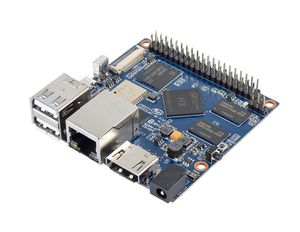
Banana Pi M2+ is mini size development board that offers great computing performance in an ultra portable form factor.It is a 65mm*65mm fantastic mini size board with Allwinner H series chips. It comes with different versions but share the same interfaces.
- Read more about : Banana Pi BPI-M2+
- Burn image : Quick Start Banana pi SBC
BPI-M2+ H3
Key Features
- Quad-core 1.2GHz Cortex-A7 H3
- 1GB DDR3
- 8GB eMMC onboard
- WiFi and BlueTooth onboard
- 10/100/1000Mbps Ethernet Port
Development For Android
Load your first image on M2P
* Download PhoenixCard: https://pan.baidu.com/s/1-fjvPqtG_zewVzqnXf1AHw?pwd=eid9
1.You could download latest image from our forum. Ex: http://forum.banana-pi.org/t/bananapi-bpi-m2p-h3-new-image-android7-0-release-2018-6-30/6147 2.Put your TF card into a TF-USB adapter, and then plug adapter in your Windows PC usb interface. 3.Prepare your image, and download image burning tools PhoenixCard.exe. 4.Use "PhoenixCard.exe" to burn android image to TF card.
* Here is the example of M3
Load your image on M2P EMMC
1.The only different with sd card burning is the image burning mode item choice
* Here is the example of M32.After succeed to burn image to SD, then plug SD card in your M2P 3.Press power button, device will copy image to EMMC automatically
* Download PhoenixCard: https://pan.baidu.com/s/1-fjvPqtG_zewVzqnXf1AHw?pwd=eid9
Development For Linux
Basic Development
Prepare to develop
* Prepare 8G/above TF card, USB-Serial interface, PC with Ubuntu System * Using your USB-Serial Connect debug console on M2P
Load your first image on M2P
1.You could download latest image from our forum * Here is the example forum thread link: http://forum.banana-pi.org/t/banana-pi-bpi-m2p-new-image-release-ubuntu-16-04-v1-1/5719 2.Install bpi-tools on your Ubuntu. If you can't access this URL or any other problems, please go to bpi-tools repo and install this tools manually. * apt-get install pv * curl -sL https://github.com/BPI-SINOVOIP/bpi-tools/raw/master/bpi-tools | sudo -E bash 3.After you download the image, insert your TF card into your Ubuntu * Execute "bpi-copy xxx.img /dev/sdx" to install image on your TF card. 4.After step 3, then you can insert your TF card into M2P, and press power button setup M2P. 5.Login user/password: pi/bananapi or root/bananapi.
Load your first image on M2P EMMC
* Run your M2P with TF card * Copy "xxx-sd-emmc-xxx.img.zip / xxx-sd-emmc-xxx.img" to your USB disk * Plug your USB disk in M2P * After M2P recognise USB disk, execute "bpi-copy xxx-sd-emmc-xxx.img.zip / xxx-sd-emmc-xxx.img" to install image on EMMC * Then power off M2P, take TF card out, power on M2P with EMMC
Update your image
For example, update your image to support new emmc5.1
* execute “bpi-tools”, to update your bpi tools; * execute “bpi-update -c bpi-m2p.conf”, to download new driver to update your image * execute “file *.tgz”, to check download files’ type is compressed data * execute “bpi-bootsel”, you will see the bootloader path, “/usr/lib/u-boot/bananapi/bpi-m2p/BPI_M2P_720P.img.gz” * execute “bpi-bootsel /usr/lib/u-boot/bananapi/bpi-m2p/BPI_M2P_720P.img.gz”, to update your bootloader * reboot
Advanced Development
How to build uboot & kernel
Install tools
- apt-get udpate
- apt-get install gcc-arm-linux-gnueabihf u-boot-tools
- apt-get install pv
- curl -sL https://github.com/BPI-SINOVOIP/bpi-tools/raw/master/bpi-tools | sudo -E bash
Clone code
- git clone: https://github.com/BPI-SINOVOIP/BPI-M2P-bsp.git
- ./build.sh
How to create an image
- Prepare a SD card which have installed system(Ubuntu/Raspbian/..)
- Boot your SD card with M2P, after M2P finish starting, copy your files and config your system, then poweroff M2P. [If you don't want to config your system, you can skip this step]
- Plug your SD card in PC(which is running Linux), "cd /media", then "ln -s <your account> pi"
- Execute "bpi-migrate -c bpi-m2p.conf -c ubuntu-mate-from-sd.conf -d /dev/sdx"
- Then you could get your own image now
GPIO Control
- To access a GPIO pin you first need to export it with
echo XX > /sys/class/gpio/export
- with XX being the number of the desired pin. To obtain the correct number you have to calculate it from the pin name (like PH18)
(position of letter in alphabet - 1) * 32 + pin number for PH18 this would be ( 8 - 1) * 32 + 18 = 224 + 18 = 242 (since 'h' is the 8th letter)
- echo "out/in" > /sys/class/gpio/gpio*NUMBER*/direction
- echo "0/1" > /sys/class/gpio/gpio*NUMBER*/value
OTG
1. On M2P console:
- Execute "./adbd.sh", then execute "ps -ax | grep adbd" to see if adbd is set up
2. On PC terminal:
- If adbd was succeed to set up, insert OTG-USB interface to M2P and PC(with Ubuntu system)
- Execute "adb devices" to see if PC has recognised M2P OTG
- If yes, we could execute "adb shell" to connect M2P by adb now
GMAC
- Use iperf3 to test gmac
Bluetooth
- Use bluetoothctl tool to operate BT
- Execute "bluetoothctl"
- If you don't know how to use bluetoothctl, type "help", you will see more commands
- Execute these commands:
WiFi on M2P
Driver code:
WiFi Client
You have two ways to setup WiFi Client
1. Use commands to setup WiFi client
- ip link set wlan0 up
- iw dev wlan0 scan | grep SSID
- vim /etc/wpasupplicant/wpa_supplicant.conf
network={
ssid="ssid"
psk="password"
priority=1
}
- wpa_supplicant -iwlan0 -c /etc/wpa_supplicant/wpa_supplicant.conf
- dhclient wlan0
2. Use UI interface to setup WiFi Client
Change Logo
1.Download M2P bsp code
- Execute command “git clone https://github.com/BPI-SINOVOIP/BPI-M2P-bsp”
- After you cloned project, execute command “cd BPI-M2P-bsp”
2.Change to your boot logo
- Prepare a ".bmp" picture, here I rotate 180°, as follows :
- Change your picture name as "bootlogo.bmp"
- put your picture to "sunxi-pack/chips/sun8iw7p1/configs/BPI-M2P-xxxP/"
Here I replaced “bootlogo.bmp” which is under “sunxi-pack/chips/sun8iw7p1/configs/BPI-M2P-720P/” as an example:
3.Build your code
- "./build.sh BPI-M2P-720P"
- choose 1
- After you built the project, you will see “SD” directory
4.Install a raspbian image on your SD card
5.Plug your SD card into your Ubuntu PC
(1) check your SD card was recognised as /dev/sdxx, as you can see, mine sd card was recognised as /dev/sde
6.Then “cd SD/bpi-m2p/100MB”
7.Execute command “bpi-bootsel BPI-M2P-720P.img.gz /dev/sde”
8.Insert your updated SD card to board, and power on, you will see:
Clear boot
- git clone https://github.com/BPI-SINOVOIP/BPI-files/tree/master/SD/100MB
- bpi-bootsel BPI-cleanboot-8k.img.gz /dev/sdX
Camara function
We use HDF5640 camara.
Guvcview
- Use your UI interface to operate camara
- Applications -> Sound & Video -> guvcview
Shell
- We also have built-in command in /usr/local/bin to test camara
- "./test_ov5640_image_mode.sh" to test picture taking function
- "./cameratest.sh" to test video recording function
IR function
- Execute "getevent"
- Use your IR device to send information to M2P
BPI-Tools
Install Bpi-tools
- Execute "curl -sL https://github.com/BPI-SINOVOIP/bpi-tools/raw/master/bpi-tools | sudo -E bash - "
Update Bpi-tools
- Execute "bpi-tools"
RPi.GPIO
Install RPi.GPIO
- Execute "git clone https://github.com/BPI-SINOVOIP/RPi.GPIO"
- after clone the repo, cd RPi.GPIO
- Execute "sudo apt-get update"
- Execute "sudo apt-get install python-dev python3-dev"
- Execute "sudo python setup.py install" or "sudo python3 setup.py install" to install the module
Using RPi.GPIO
- cd /usr/local/bin
- Execute "./bpi_test_g40.py" to test RPi.GPIO
WiringPi
- GitHub: https://github.com/BPI-SINOVOIP/BPI-WiringPi2.git
- We also have built-in test command in "/usr/local/bin"
How to Update WiringPi
- Execute "bpi-update -c pkglist.conf"
- Execute "bpi-update -c bpi-pkg-bpi-wiringpi.conf"
RGB 1602 LCD
- Execute "/usr/local/bin/bpi_test_lcd1602.sh"
0.96 Inch OLED Display
- Execute "/usr/local/bin/bpi_test_52pi.sh"
8x8 RGB LED Martix
- Firstly you need a GPIO Extend Board for 8x8 LED Martix
- Execute "/usr/local/bin/bpi_test_gpio40.sh"
